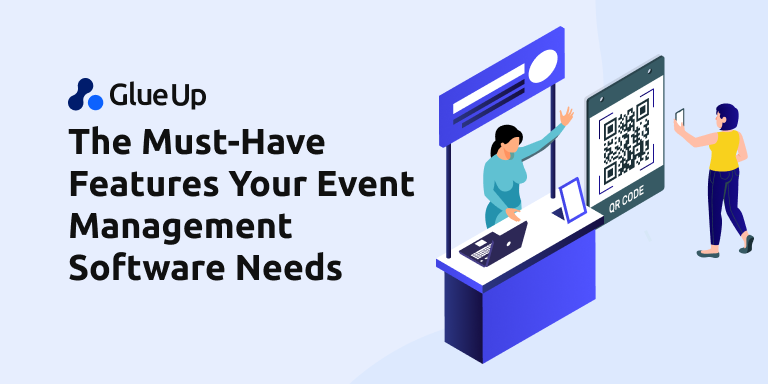
Ever since the explosive spread of the COVID 19 (Coronavirus) virus, practically the whole working world has been working from their homes and transforming their work so that it can rely solely on digital engagement both internally and externally. That means more conference calls, more video chats, more online demos, and of course, transforming events so that they’re hosted online in webinars.
Here’s some tips to take home with you when you start planning your next event for an entirely online audience even if you’re doing it from home.
Quick Tips
- Clear Workspace
- Kick People Out
- Upgrade Equipment
- Find a Webinar Platform
- Get the Audience Involved
- Do Dry Runs
- Post-Event Follow Up
1. Clear your office or home of clutter

Whether the hosting of the event is going to take place at your office or from your home, just make sure you tidy up a bit. It’ll help keep you organized while taking on other steps in the setup process, but not only that, in case your webinar ends up using video, you’ll be showing your more professional side through a neat and tidy workspace.
This also means minimizing what audiences see through the camera, which means clearing your background and removing anything distracting. A trophy, for instance, maybe entirely professional looking in your office or home, but it may actually distract audiences from listening to you if you actually have interesting things in the background. So, keeping it a little bit boring might actually be helpful for your webinar to keep the focus on the speaker.
Also, this goes without saying, make sure the background doesn’t give away any personal information of yourself or others. This includes making the room far away from any work calls happening so no one on the webinar can eavesdrop, an unfortunate mistake we have seen before plenty of times.
2. Keep co-workers or family busy/silent
Nothing is more disturbing to a webinar if someone comes in to disrupt it. If you have your own office, home office, or other private space to work from, put up a clear sign outside the door saying Do No Disturb. If you’re out of an office, a nice big friendly CC Reminder will help, as well as even locking the door (but follow fire code please).
If you’re at home, we both know a sign doesn't mean much to a nosy spouse or 6-year-old, so you may actually need to find a creative way to keep them occupied. Sending them out on a mission to get something you know will have trouble finding, or otherwise sending them off to do their favorite activity will be certainly good at keeping them out of the house.
What if there’s say, a huge pandemic impacting the world and you can’t just leave the home? Tricky, but you can keep them busy with TV, a board game, anything that stops them from getting bored and barging into your webinar.
3. Get better A/V equipment

These days it’s getting easier for folks to attend webinars with more readily available computer and mobile devices, including headphones, microphones, and more. Even more so, it’s getting even easier to save recordings of webinars to be shared later. That means Webinars are becoming more permanent, rather than one-time events, meaning that you can now share past webinars.
The flip side of this is that your focus on quality Audio and Video is even more important than before. Higher quality recordings will generally have better longevity online. Video can sometimes be left not invested in unless your current video quality is below 720p native resolution. You can test this by simply recording a quick test clip and right-clicking the file in your PC and viewing the “properties” and finding the resolution there.
Audio, however, is one of the most important aspects of a webinar, especially if it’s not going to include a lot of visual guides. For this, some suggested equipment for microphones would be the Blue Yeti, Blue Yeti Snowball, Shure SM58, or the Razer Siren X. There might be other fitting microphones in this price range, but generally, these microphones are high enough quality for recording.
Don’t worry too much about your voice coming through in the live webinar as compression through the web and your streaming platform will likely reduce quality no matter how good your microphone is. The raw recording, however, will have a major improvement.
4. Find a fitting webinar platform
While you may be used to having demos or internal conference calls over some platforms like Slack, Microsoft Teams, Google Hangouts, Skype, or even Discord, the free versions usually are only for internal users at your workplace, or simply limit the number of concurrent users in a call.
This is where tools like GoToWebinar, Zoom, and other webinar platforms play an important role. They excel in having a very large audience-single speaker style of video conferencing. Perfect for a webinar.
Each tool has a separate way of packaging their offers, as well as what admin tools you’ll have available to you. This is where it’ll take some shopping and product comparisons to determine what’s best for your webinar’s structure. If you intend to have the audience get involved, which can be effective and is a bigger trend these days, then tools with strong admin abilities would be favored in order to control the audio.
5. Get the audience involved

As we eluded to earlier, it’s not required, but it’s a big trend that webinars are including the audience as a part of the webinar. It’s engaging and makes the audience feel they’re getting their time’s worth.
There’s also some advantage to having the audience engage with the speaker. In a physical room, people can be overshadowed by louder individuals, those in the back of the room may get fewer chances to be seen, or simply the speaker could miss a raised hand.
By being online, a webinar gives equal footing for all attendees, and with good admin controls, it can be easy to give people a more fair chance to speak. This also makes them more clear for all attendees, as well as keeping people more snappy with responses, no need to pass mics around the room or quiet down the audience when you can simply blanket-mute a room.
Overall, audiences love asking questions, giving opinions, sharing experiences, and challenging the speaker. Again, it’s up to you to let the audience get involved, it may be that audience involvement harms your format, but it’s something to consider even if it’s a quick Q&A after the call.
6. Do a dry run (or two)
Dry run the webinar. Get friends and colleagues to join and help test your A/V equipment. Make sure recordings come out just fine, and get them to practice engaging with you on the audience’s end to help you with the admin controls.
If things can get too much for you, try including helpers to host the webinars, admins to control the audience, and other menial admin tasks so that you’re not handling it all live. Trust us, it can be a bit much to do all these at once while speaking to an audience.
Dry runs are also a great way to test other features like email campaigns that invite or follow up the event.
7. Post-webinar follow-up

Webinars need to bring value to the table. Most webinars come off as educational seminars or informative speaking opportunities, but if you the company or organization are hosting a webinar, then you really need to siphon as much value from the audience as possible without taking their experience away.
Post-event follow up is as important for webinars as it is for physical events. Whether it’s a survey to gauge the audience’s experience, or a follow up with a discount for those that attended the webinar in order to entice a sale, post-webinar follow-ups are your chance to get one last sweeping engagement point to your audience. They’ve already attended your event, so you can assume the responses will be quite genuine and fruitful. Don’t miss this opportunity. Check out our article that can go into more depth about your event engagement process.
Back to you
Now that we’ve armed you with the best tips in the industry, it’s time for you to put them into practice. Webinars have seen even more importance in the world since the COVID 19 outbreak, and even after the pandemic is over, it’s very likely that businesses will use online events as proper engagement points as they discover their benefits over physical events.
If you’re not sure how to tie your online events to your entire business, audience, or website, contact us and book a demo. We’ll show you how the Glue Up platform is helping companies across the world host online events with integrated event web page builders, email campaigns, ticketing, and more.



